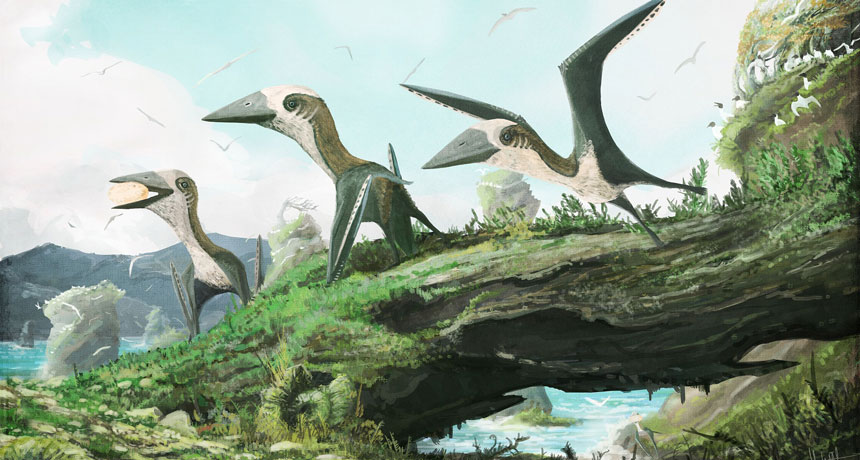Pterosaurs weren’t all super-sized in the Late Cretaceous

Pterosaurs didn’t have to be gargantuan to survive in the Late Cretaceous.
Fragmentary fossils of a roughly 77-million-year-old pterosaur found in British Columbia suggest it had a wingspan of just 1.5 meters, close to that of a bald eagle. The ancient flier is the smallest pterosaur discovered during this time period — by a lot, report paleontologist Elizabeth Martin-Silverstone of the University of Southampton in England and colleagues August 30 in Royal Society Open Science.
Dozens of larger pterosaurs, some with wings spanning more than 10 meters (nearly the length of a school bus), have been unearthed. But until now, scientists had found only two small-scale versions, with wingspans 2.5 to 3 meters long, from the period stretching from 66 million to 100 million years ago.
Some scientists blamed competition with birds for the scarcity of little flying reptiles. Researchers have proposed that, “the only way pterosaurs could survive was by evolving completely crazy massive sizes,” Martin-Silverstone says.
The new find, she says, may mean that, “pterosaurs were doing better than we thought.”